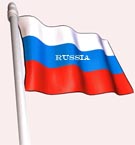Car-happy Moscow caught in stranglehold of gridlock
 Moscow - Moscow - Europe's biggest, most dynamic and hectic city - is impressive. But the fast-paced lives of Muscovites slow to a crawl as soon as they get into their cars each morning.
Moscow - Moscow - Europe's biggest, most dynamic and hectic city - is impressive. But the fast-paced lives of Muscovites slow to a crawl as soon as they get into their cars each morning.
Bumper-to-bumper traffic is a side effect of Moscow's economic boom. Even on a normal weekday, about 650 traffic jams - totalling some 700 kilometres in length - will clog the streets. The average speed during rush hour is about 8 to 11 kilometres per hour.
Muscovites have grown accustomed to the snarls. But the diagnosis of traffic experts is dire. The city, they say, is being strangled by gridlock.
Moscow's metro, as its world-famous underground railway system is known, was a real alternative to car travel years ago. But the elaborate, museum-like stations of the metro, which still bears the name of Russian revolutionary leader Vladimir Lenin, are reminiscent of stockyards during the morning and evening rush hours.
Thousands of travellers sometimes clog the stations and platforms. Huge agglomerations of humanity form in front of the fabulously long escalators, inching - oh so slowly - their way forward. Things really get chaotic when two human rivers, moving in opposite directions, cross paths at an interchange station.
The short intervals between arriving trains - about a minute at peak times - may well be a world record. But as each train leaves, another crowd quickly replaces it, leading to more pushing and shoving.
Finding a handhold during a metro trip is often unnecessary - the press of bodies in the carriages keeps passengers from falling down. About 9 million people use the subway daily, even though it was designed for a maximum of 7 million.
The Moscow metro boasts nearly 800 kilometres of track and 176 stations. But urban planners say that at least another 100 kilometres are needed. According to Dmitry Gayev, the subway's director, new lines will be built as soon as possible.
Meanwhile, Moscow's population continues to grow rapidly. Officially, the Russian capital has 10.5 million inhabitants. Unofficially, there are 2 or 3 million more, many of them unregistered migrant workers from former Soviet republics. Experts warn that population growth could continue to outpace the metro's expanding capacity.
Above ground, some 3.3 million vehicles crisscross a city not designed for so many. Moscow traffic planners still see salvation in more roads rather than in more public transportation. They are considering elevated highways and intersecting streets along with ring roads, or beltways, within the city.
"There are four ring roads in Moscow already. Add a fifth and the city can host the Olympic Games again," motorists joke.
Municipal officials are even seriously mulling futuristic solutions to the traffic problem. One calls for building roads over existing railroad tracks. Another, a German company's "strassenhaus" project, would put roads on the roofs of buildings.
One way to avoid traffic jams already exists: For a cool 2,000 euros (2,567 dollars) per hour, high-fliers can zip from one Moscow airport to another by taking the helicopter taxi. However, due to the current financial crisis, which is raging in Russia as well, this means of transportation is in danger of losing its popularity. (dpa)